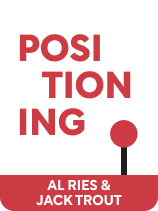

This article is an excerpt from the Shortform book guide to "Positioning" by Al Ries and Jack Trout. Shortform has the world's best summaries and analyses of books you should be reading.
Like this article? Sign up for a free trial here .
According to marketing experts Al Ries and Jack Trout, how should you get started with a competitive marketing strategy? What should you consider before you position your product?
In Positioning, Al Ries and Jack Trout lay out a competitive marketing strategy to position your product, your brand, or yourself in a crowded marketplace. They urge you to consider three things before you execute your strategy.
Continue reading for marketing insights from Al Ries and Jack Trout.
Al Ries and Jack Trout on Positioning Preliminaries
According to Al Ries and Jack Trout, before you implement a competitive marketing strategy and effectively position your product, you must think through three areas:
- You must understand your current position.
- You must identify a desired position that you could realistically occupy.
- You must select a name that’s compatible with your desired position.
Let’s consider each of these in turn.
1. Understand Your Current Position
How do your prospective customers view your business? Who are your competitors, and how do they compare in your prospective customers’ view? Ries and Trout warn that people outside your company usually don’t view your company or product the way you do. They advise spending money on surveys or other research, if necessary, to answer these questions decisively.
(Shortform note: When discussing positioning, marketing consultant Geoffrey Moore puts particular emphasis on identifying your competitors because customers position your product mostly based on how it compares to alternatives. He draws a distinction between “market alternatives,” which are other products that compete directly with your product in the same market, though potentially using different technology, and “product alternatives,” which apply the same technology in a different market context. Moore argues that both types play important roles in positioning.)
2. Identify Your Desired Position
Al Ries and Jack Trout assert that, in addition to a clear idea of the position you currently have, you need a clear and realistic idea of the position you want.
Ideally, you’ll want to position your product as a market leader, because leading the market has significant advantages: Brand loyalty drives greater demand for your product, both from customers themselves and from distributors, it’s easier to attract good employees, and your stock prices tend to be higher, making it easier to raise capital. These advantages tend to make success self-perpetuating for leading products or companies.
(Shortform note: Geoffrey Moore corroborates these assertions, arguing that the psychographics (the combination of psychology and demographics that influences a person’s buying habits) of mainstream customers lead them to position one company or product as the market leader in any given venue, and then maintain the leader in that position. Specifically, mainstream customers tend to evaluate products based on the reputation of the product and the company that makes it, rather than their own technical evaluation of the product. This reputation factor is what makes displacing a market leader nearly impossible, even when your product is technically better.)
The authors argue that with these advantages, market leaders become entrenched, so that if a competitor tries to supplant them simply by making a better product, they’re almost never successful. Instead, Ries and Trout recommend that to become a market leader, you become the first to occupy the leading position in your chosen market.
To do so, find (or create) a niche in which you can be the first to make a credible claim of market leadership. Ries and Trout warn that this often involves sacrificing your product’s appeal to the general market in order to appeal directly to a target niche where you can be the first to claim the leadership position.
| The Appeal of Niche Markets Other marketing experts offer advice on targeting a niche that expands Al Ries and Jack Trout’s recommendations: According to Geoffrey Moore, selecting a niche that is small enough for your product to dominate is crucial because it has an amplifying effect on marketing: The smaller and more close-knit the niche, the faster word spreads, and the easier it is to establish your position there. Regis McKenna identifies four “golden rules” of positioning, one of which is to target a specific niche with the best product in that niche. He notes that to become the market leader, people must perceive your product as being the best, so he recommends targeting only a specific industry or application where your product provides a clear advantage. The basic premise of Blue Ocean Strategy is to find an uncontested market by introducing a product that provides some unique value to your customers. In practice, this strongly resembles identifying an open niche, although the blue ocean approach typically involves creating a unique product to appeal to a unique audience. |
Find Your Niche
Al Ries and Jack Trout offer a number of suggestions to help you find an open niche by adjusting different aspects of your product or advertising to stand out from the crowd:
- Product Size: If the industry trend is toward large products, try offering a miniature version, or vice versa.
- Price: Premium versions and economy versions of a product can each offer profitable niche opportunities, if those niches aren’t already taken. Ries and Trout advise that economy versions are particularly well received for cutting-edge products, because lower cost means less risk for customers to adopt unproven technology. Conversely, they say customers are more likely to be receptive to premium versions of tried-and-true technologies.
- Demographics: Try tailoring your product and advertising to appeal to a gender or age group that nobody else is targeting.
- Setting: Is your product particularly suitable for use in a particular place, climate, season, or time of day? If so, you may have an opportunity to become the market leader of usage in this niche setting.
- Distribution: Look for new ways to improve your customer’s purchasing experience. Even something as simple as clever packaging may set your product apart in a way that creates an open niche in the customer’s mind.
| Blue Ocean Strategy Insights In Blue Ocean Strategy, Kim and Mauborgne offer suggestions for opening up an uncontested market that add nuances to many of Al Ries and Jack Trout’s insights: Consider why customers trade up and down in quality and price. Concentrate on delivering the critical factors while eliminating needless ones. This expands on Ries and Trout’s advice on price. Considering the why behind prices may reveal market niches other than those at the upper and lower end of the price spectrum. Consider what happens before, during, and after your product is used, as you might find ways to bundle complementary products that enhance the use of your product, thus adding unique value. This expands on the setting aspect of Ries and Trout’s advice. It also may shed more light on distribution if it provides an improved product experience, and can even shed light on your consideration of demographics if it encourages you to explore how different people use your product. Consider making an emotional product more functional by stripping away unnecessary extras, or making a functional product more emotional, in the same way that Ries and Trout encourage you to reconsider your product’s expected size. Ask how you can improve on any step of the product life cycle, from purchase to delivery to use to maintenance to disposal. If your product provides a unique advantage in any of these areas, that could set it apart in its own niche in the customer’s mind. This expands upon Ries and Trout’s discussion of distribution. |
3. Select a Name That Supports Your Claim
According to Al Ries and Jack Trout, the power of the name should not be underestimated. Your product name (the third element of preliminary positioning) is your most important marketing decision, because the name is what people use to mentally place your product in the market landscape. If they can’t easily place your name where you want them to position you in the market landscape, then your name doesn’t support your competitive marketing strategy. In this case, Ries and Trout advise you to change the name.
They assert that for a prospective customer to position your product where you want, your product name needs to be representative of the product, unique, and memorable. Consider possible abbreviations and their ramifications. Avoid names that are too vague, names that could become obsolete, names that are highly technical, and names that could cause confusion between your product and a competitor’s product.

———End of Preview———
Like what you just read? Read the rest of the world's best book summary and analysis of Al Ries and Jack Trout's "Positioning" at Shortform .
Here's what you'll find in our full Positioning summary :
- A strategy of framing your product, service, company, or self against your competitors
- How to use the concept of positioning to further your career development
- Harmful positioning strategies you should avoid






